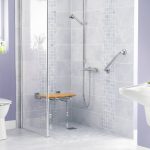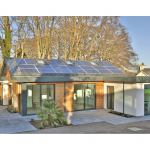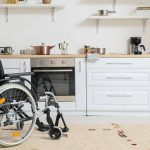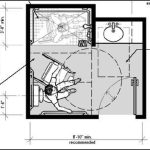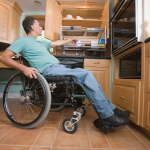Multiple sclerosis is a chronic autoimmune disorder that affects the nervous system in a disruptive and unpredictable way. Generally, it develops as either progressive or relapsing. That means MS will generally appear in either an intermittent cycle of symptoms and remission or a steady, gradual progression of symptoms.
The damage to central nervous systems (CNS) communication causes a range of neurological symptoms, which can worsen or ameliorate spontaneously, including:
- Fatigue
- Muscle weakness
- Vision problems
- Cognitive and mood changes
Domestic Needs of MS
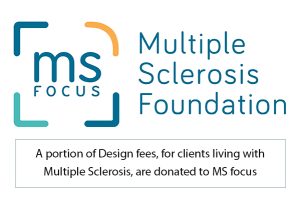
For instance, a person with MS may experience muscle spasticity that makes fine motor movement difficult, like grasping a doorknob or flicking a light switch. Balance issues and muscle weakness may increase fall risk. Suddenly, a cluttered living space, steep stairs, and a boxed-in shower feel like major daily obstacles.
Even if energy levels vary from high to low on a given day, fatigue is a persistent symptom of MS. Homes with complicated architecture, entrances, lay-outs, appliances, and features stand out after diagnosis. Something tolerable before, like a window that sticks, can become a hindrance to physical comfort and independence.
In this example, a sticking window would actually hit three symptoms: muscle weakness, general fatigue, and temperature sensitivity.
Prepare to Handle Fatigue
You should have efficient options ready for when fatigue peaks, since it is the most common symptom. We’ll go into how to make everyday tasks in the bedroom, bathroom, and kitchen simpler, less time-consuming, and less physically taxing.
Because of common motor and vision difficulties, people with MS also need open space to move at home. This starts with decluttering from the floor up. Clear paths make way for trip-free unassisted walking or assistive devices like walkers or wheelchairs.
Pain Management and Emotional Regulation
And let’s not overlook the pain management and emotional regulation needs of people with MS. You might create an MS-friendly office, so you can continue at your current job but work from home. You’ll also want to incorporate colors, styles, and aesthetics that calm or lift your spirits.
Pain management may also involve therapeutic uses of heat to address muscle stiffness and temperature sensitivity in winter months. Or, the opposite during warmer months – ways to stay cool. This can call for specific products or designs to facilitate that, like a smart home voice-controlled thermostat.
You might even need help from a caretaker, family member, or friend. We can show you how to make their job easier and create a nurturing space for them in your home, too.
How to Approach Home Modifications for Multiple Sclerosis
Our first recommendation is to take these changes gradually, especially if you feel overwhelmed with a diagnosis. Because MS’s development differs from person to person, you have some time to determine the home modification course that you need.
Plan for the future, but know that taking action on simple changes can make a big difference now.
Home Changes for Multiple Sclerosis: Quick Fixes
Right away, you can implement some simple MS modifications to make everyday life a little smoother.
Change to Universal Design Fixtures
Easy universal design fixture swaps don’t shout “accessibility”, but the household member living with MS will appreciate the ease of use:
- Change light switches from the traditional shape to toggle switches.
- Switch out tough-to-grasp door knobs for door levers, which are easier to manipulate without fine grasp.
- Install touch or automated lights and faucets.
- Situate temporary grab bars in needed places – some of them suction to the wall!
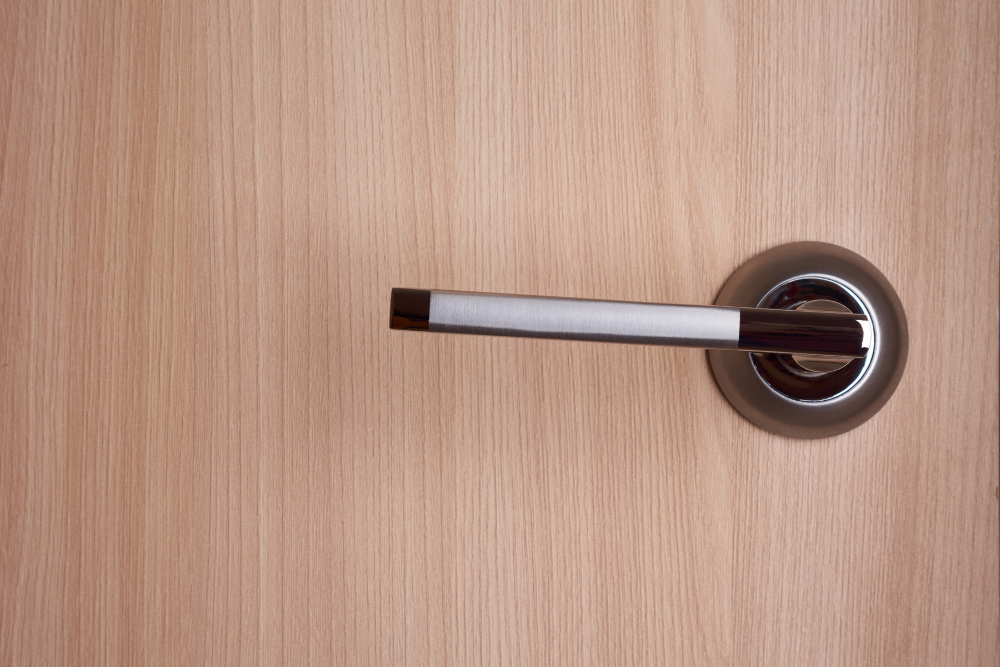
Entrances and Exits
Getting in and out of the home probably stuck out as a sudden challenge when the person with MS had their first bout with mobility issues. You may wonder if a quick fix for this exists – and it does! Temporary ramps can provide greater ease after a short installation, helping the resident feel free to come and go as they please.
Small threshold differences, often at doorways or transitioning points in the house, might also seem like larger stumbling blocks in light of MS symptoms. But diminutive threshold ramps can smooth out contrasting floor heights between rooms.
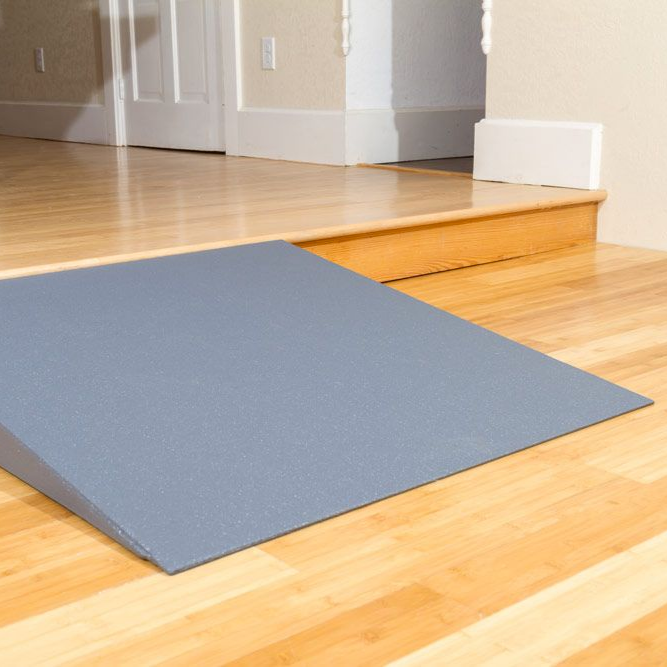
Adjust Your Furnishings
As we mentioned, one major key to MS interior design is clear space. People with MS need obstruction-free walking paths to minimize trip hazards, a high MS safety consideration.
In some homes, this can be accomplished in a day or two with simple rearranging. Friends, family, or caregivers can be called on to help move around couches, chairs, desks, and tables until you’ve achieved a clear flow. In other homes, this may take more involved efforts.

Invest in Products for Multiple Sclerosis
Many products and devices exist on the market to support energy conservation and accessibility. Equip yourself with these essentials to ease everyday tasks:
- Reacher/grabber tools – an arm extension for times when you’re dealing with limb stiffness, fatigue, or need to remain seated.
- Foot-lifter straps – these can give you that extra boost you need to get in and out of bed.
- Crockpot or pressure cooker – simplify food preparation to keep some control over how you cook and eat.
- Tablet monitors or walkie talkies – communicate with other people in the house without having to change location or raise your voice.
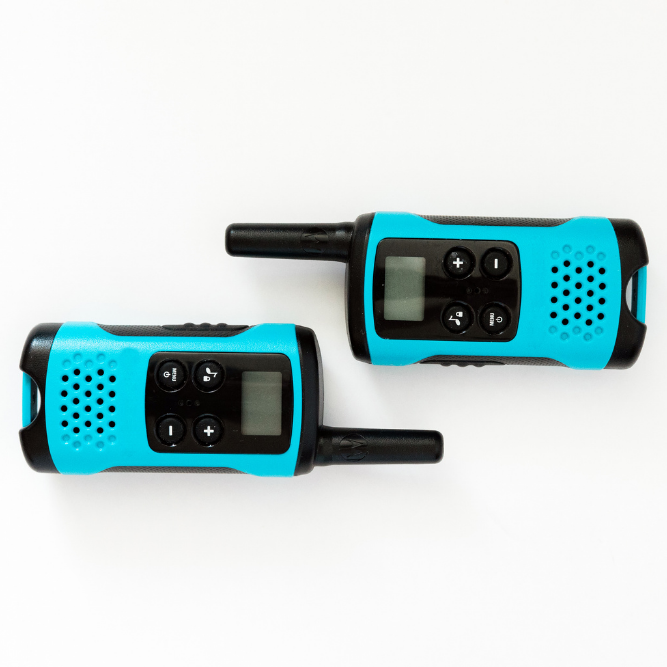
Lighting
Long-Term Home Renovations for Multiple Sclerosis
General Home Recommendations
Certain wide-scale renovations make sense in most parts of the house:
- Create visual contrast in flooring to meet visual impairment needs. This could mean adding a border to designate where the wall meets the floor or demarcating a clear walking path that’s a different color. These strategies can be employed on carpet, tile, or wood flooring. Note: for many people, walking on carpet takes more energy because of friction. Or the use of a motorized scooter on carpet can prove difficult. So consider new wood, vinyl, or tile flooring.
- Ramps, stair lifts, vertical platform lifts, or elevators to deal with steps in the way that’s most appropriate for each entry/exit location. Occasionally, low-rise steps may provide a better solution than a ramp.
- Widening doorways. In order to make room for equipment like walkers or wheelchairs, it’s easiest to widen doorways to at least 32 if not 36 inches. If an existing doorway is almost wide enough, you can often use an offset hinge instead.
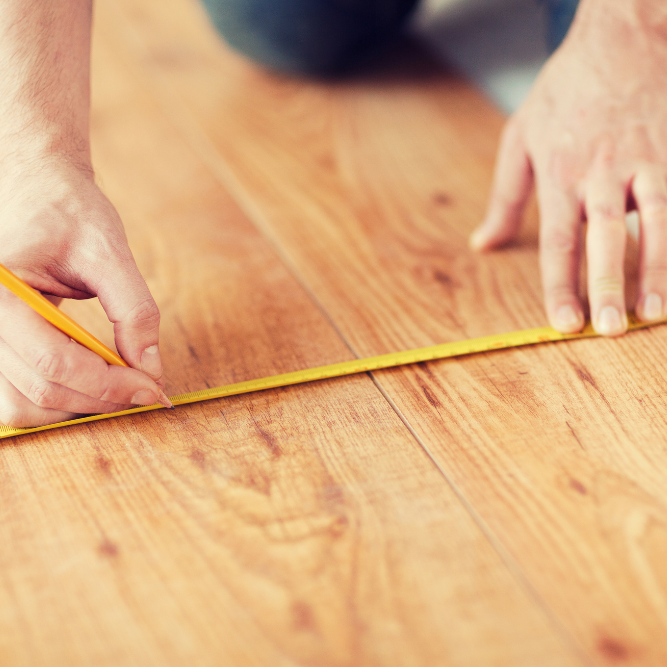
Bathroom Remodeling for MS
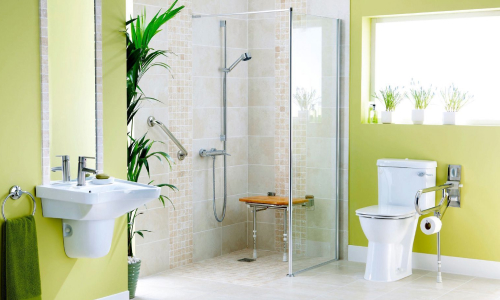
The bathroom often creates challenges for anyone with mobility issues, people with MS included.
It may be worth investing in MS home modifications for this room more than others. By sticking with universal design principles, the upgrades will help maintain market value for your home:
- Change the height of your sink for easy access while sitting.
- Also raise the height of your toilet by adding one designed for comfort-height .
- Install grab bars in this slipperiest of rooms – as always, we recommend going with a type that you find stylish.
- Widen the bathroom door or change the door type to another user-friendly style – sliding or pocket.
- Modify towel rods, hooks, counters, and cabinetry into the “easy-to-reach” height zone.
Consider how to address your bathtub or shower: is it best to install a roll-in or zero-entry shower or walk-in tub? Can you still get into the shower, but a shower chair would help reduce fatigue? Keep in mind that an easily accessible bathtub may come in handy for a relaxing soak in cool water to alleviate nerve pain.
Biophilic Design in the Bathroom
The bathroom is a great place to employ biophilic design. This essentially means “bringing the outside in”. You could choose natural materials like a stone tile or wood accents. A frosted window preserves privacy while letting in natural night. Certain indoor houseplants really thrive in the bathroom, too. All these allusions to nature create a calm space that supports pain management and cognitive relief, too.
Keep in mind that biophilic design can be applied to all rooms in the house! We like to lean on it for a mental health boost in home design.
Kitchen Remodeling for Multiple Sclerosis
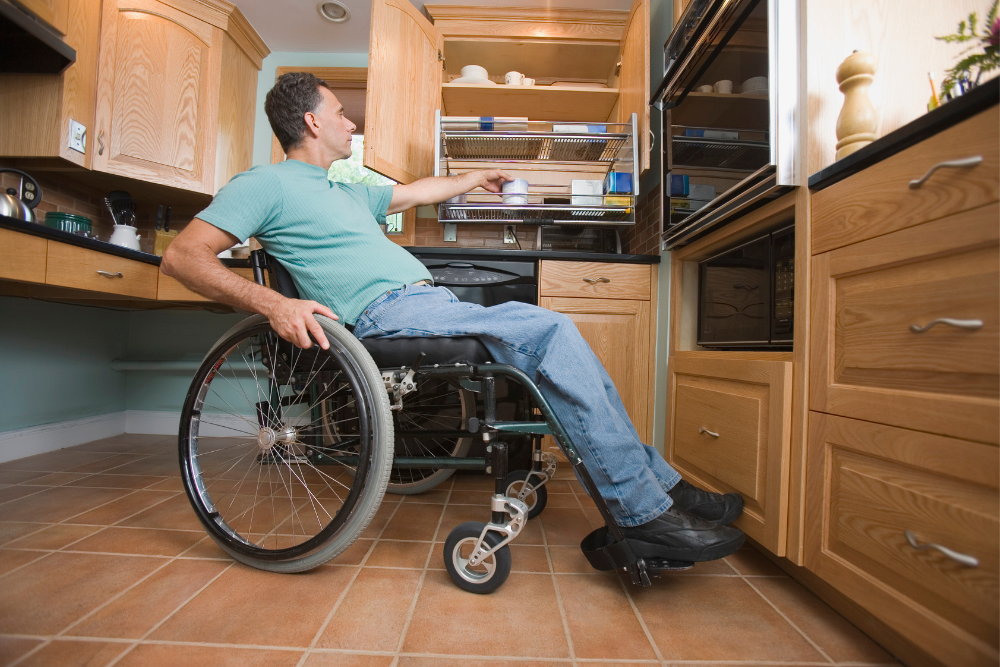
The main challenges in the kitchen are fatigue, temperature sensitivity, and motor strength and coordination.
Try some of these MS home modifications to maintain independence in preparing your meals:
- Installing an induction stove – keeps kitchen temperatures down, since they heat with magnetism rather than gas or electric coils.
- Invest in a large toaster oven or microwave to cook food – also less heat for MS temperature sensitivity.
- Two-tiered countertop – or, alternatively, a two-tiered kitchen island – so that you can sit while preparing and eating foods.
Bedroom Modifications for Multiple Sclerosis
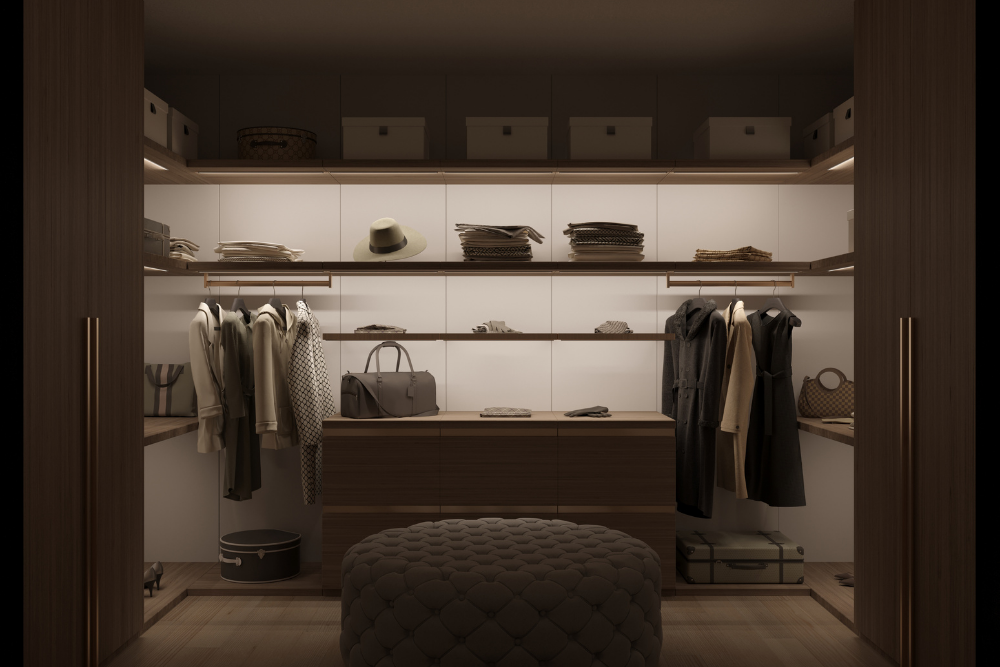
In order to address mobility and fatigue challenges, you might consider moving your bedroom to the first floor if it’s not already there. Within your bedroom, consider some of these MS home modifications.
- Install clear, motion-activated lighting to reduce your fall risk when entering and attending to your daily wardrobe changes.
- Lower or raise bed height to make for an easy transfer- there is an optimum height!
- Add a safety ring or other slide rail to bed – be attentive to material and color to maintain unity of style and harmony in this most personal of spaces.
- Replace closet doors with a curtain – takes less energy to access storage there.
- Organize items in closets so the most-used items are easily accessible.
- Rearrange closet bars and shelves to lower heights, or add drawers – again, give yourself the option to sit whenever possible.
And keep in mind the mental health benefits of a well-designed space that you really love. Use paint colors, textures, and fabrics that feel uplifting and comfortable for you.
Although the bedroom is an especially personal place to incorporate preferences, this goes for all the rooms in the house where possible.
Smart Technology for MS
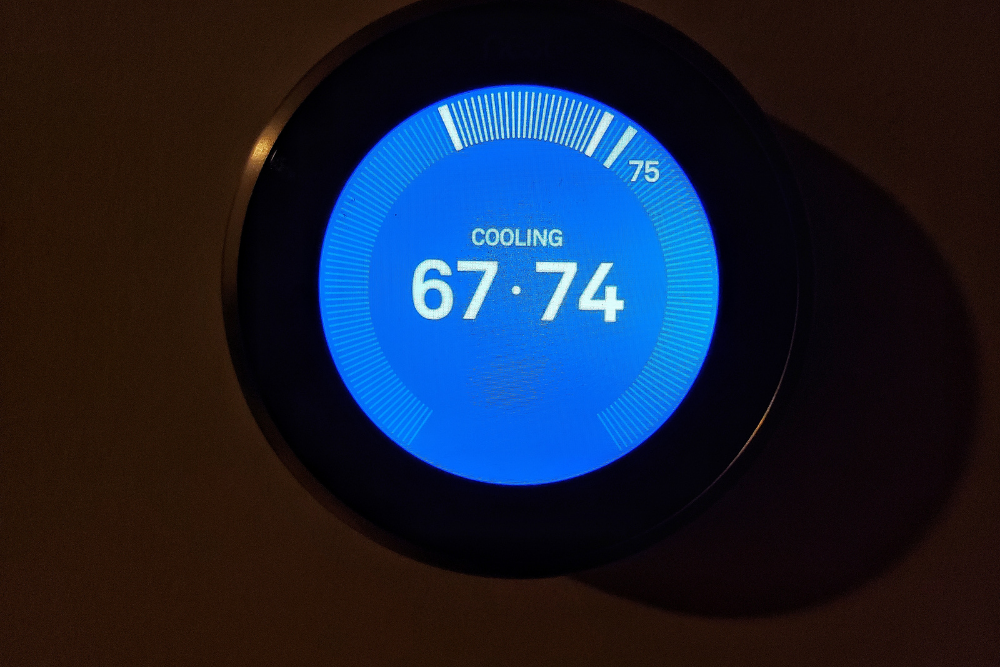
Don’t underestimate the value of a WiFi thermostat or an Alexa that can communicate with your house regulating systems. These will help you manage temperature sensitivity and conserve your energy.
Automation can expand from there into many realms of the home. Smart appliances and automated doors increase ease and energy conservation in daily life at home.
Similar surveillance technology can be installed in the home to help intervene for fall risks. Motion sensors throughout the house can actually detect when a person’s balance or gait changes, alerting both the person with MS and nearby caretakers.
Wearable fall prevention devices perform a similar function; as expected, they are smaller and worn on the person’s body. These open us to the realm of assistive technology products, useful counterparts to accessible home design.
To support cognitive changes over time, install, set up, or wear smart devices, like smart calendars with date/time displays and built-in reminders or scheduled medication prompts.
Make Space for the Caregivers in Home Design
If you know someone with MS, you probably know their caregiver, as well. Asking for help when you live with a chronic condition is more than okay – it’s normal.
Family, friends, and professional assistants often play an essential role in the daily, weekly, or otherwise routine life of somebody with MS. Helping care partners maintain wellness helps the person living with MS just as much. We design spaces for caregivers as part of our holistic perspective.
Just like we approach design for the primary resident, we consider the needs of the care partner. For instance, if they often work overnight, you could allocate a room near the master bedroom: murphy bed, half-bath, and kitchenette. There, they can rest and take meals, but still be able to respond quickly if needed.
You can also incorporate organized cabinets, drawers, or work tables within the bathroom and kitchen designs – this helps reduce caretaker fatigue, too.
Home Modifications for MS: Within Reach
You don’t need to create your plan alone. We are CAPS-certified home designers who offer solutions for people living with chronic conditions. Contact us today to start with a conversation.

